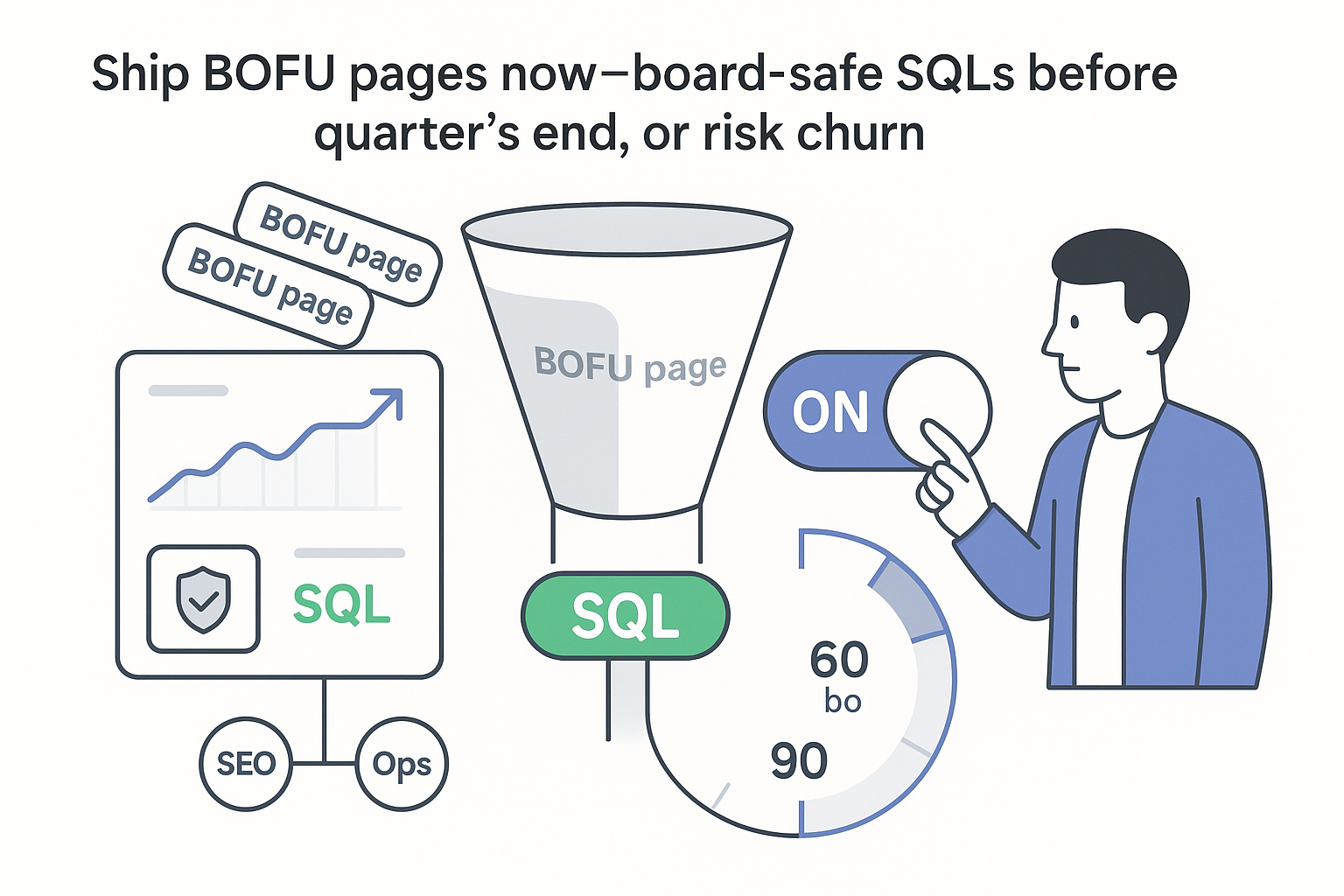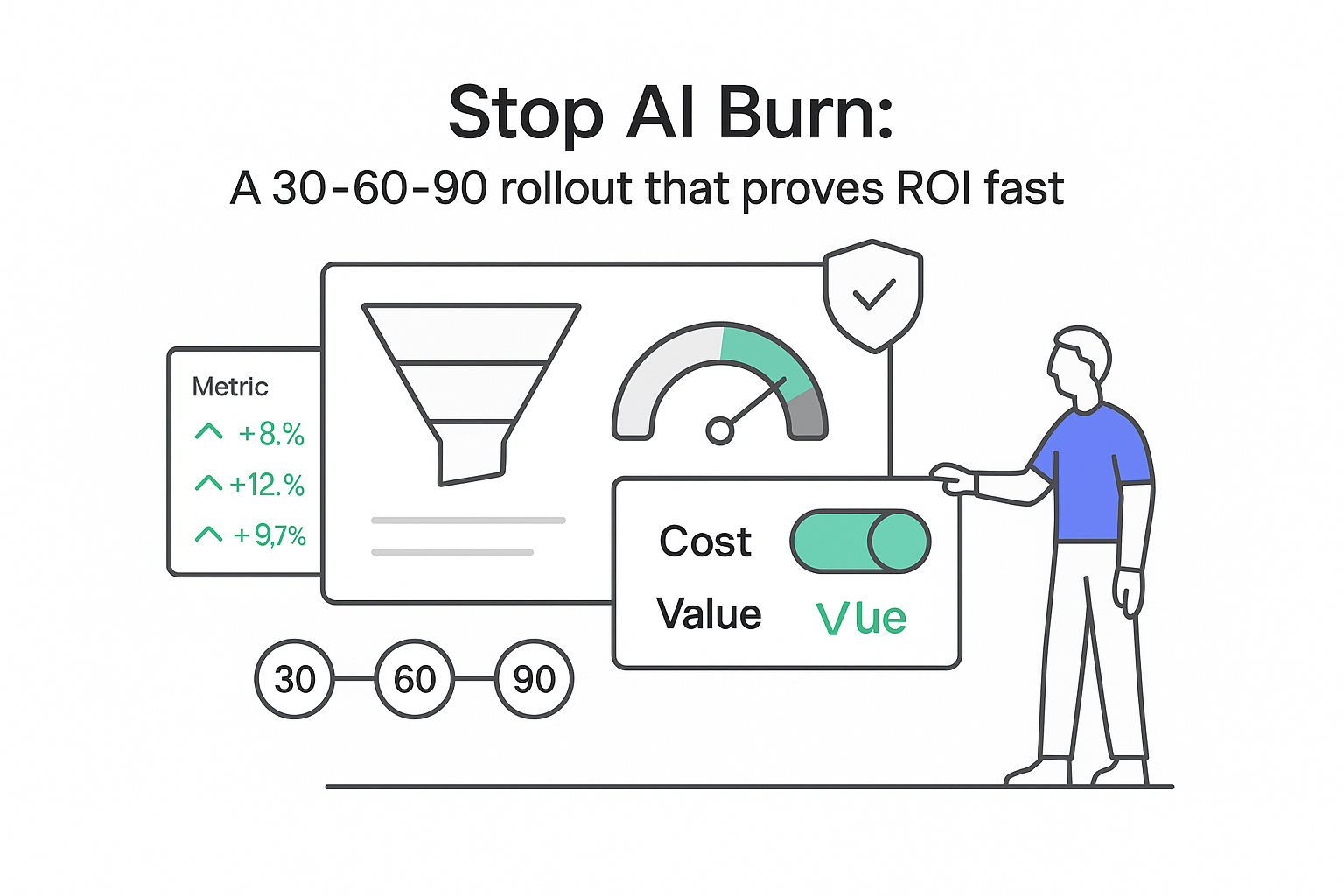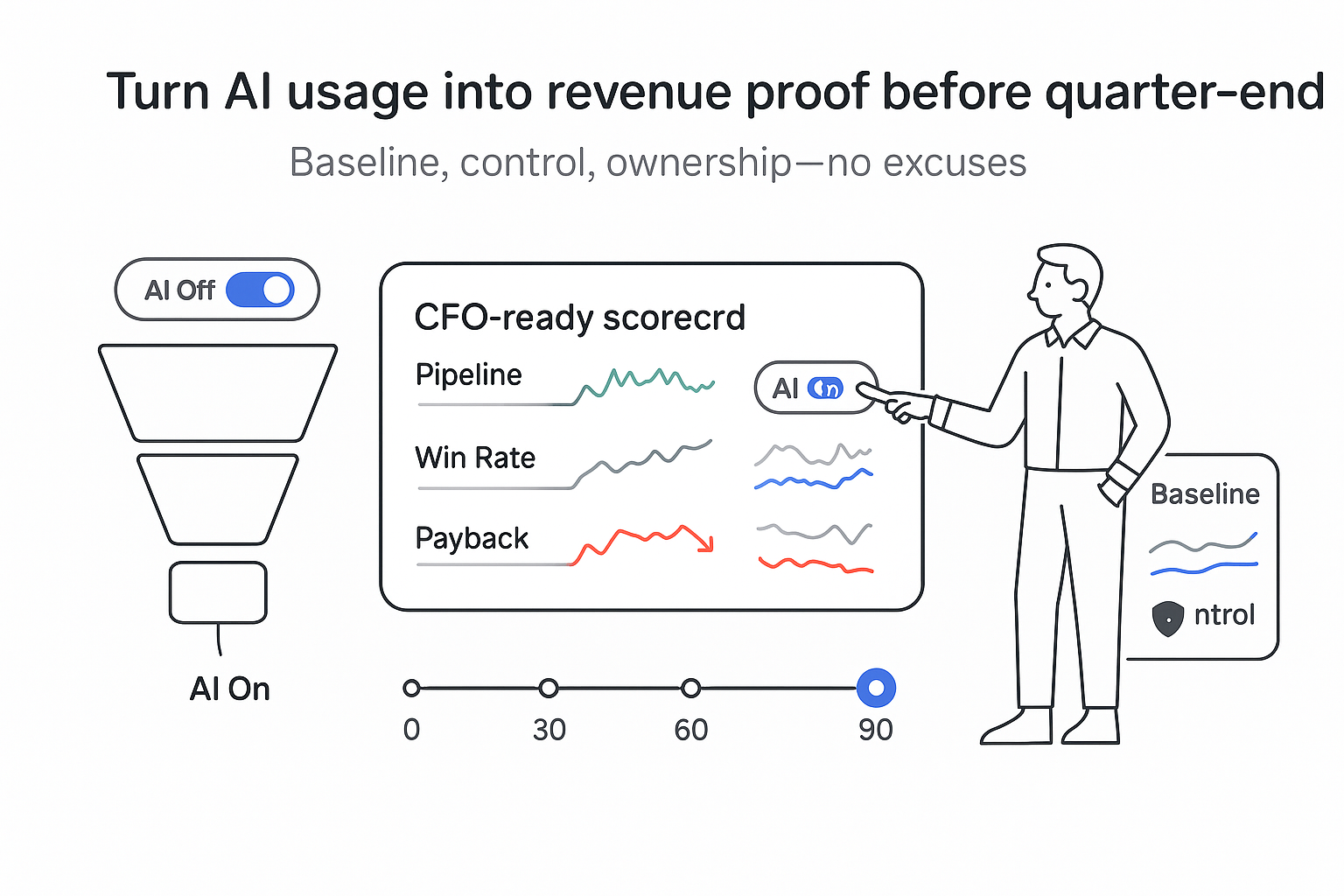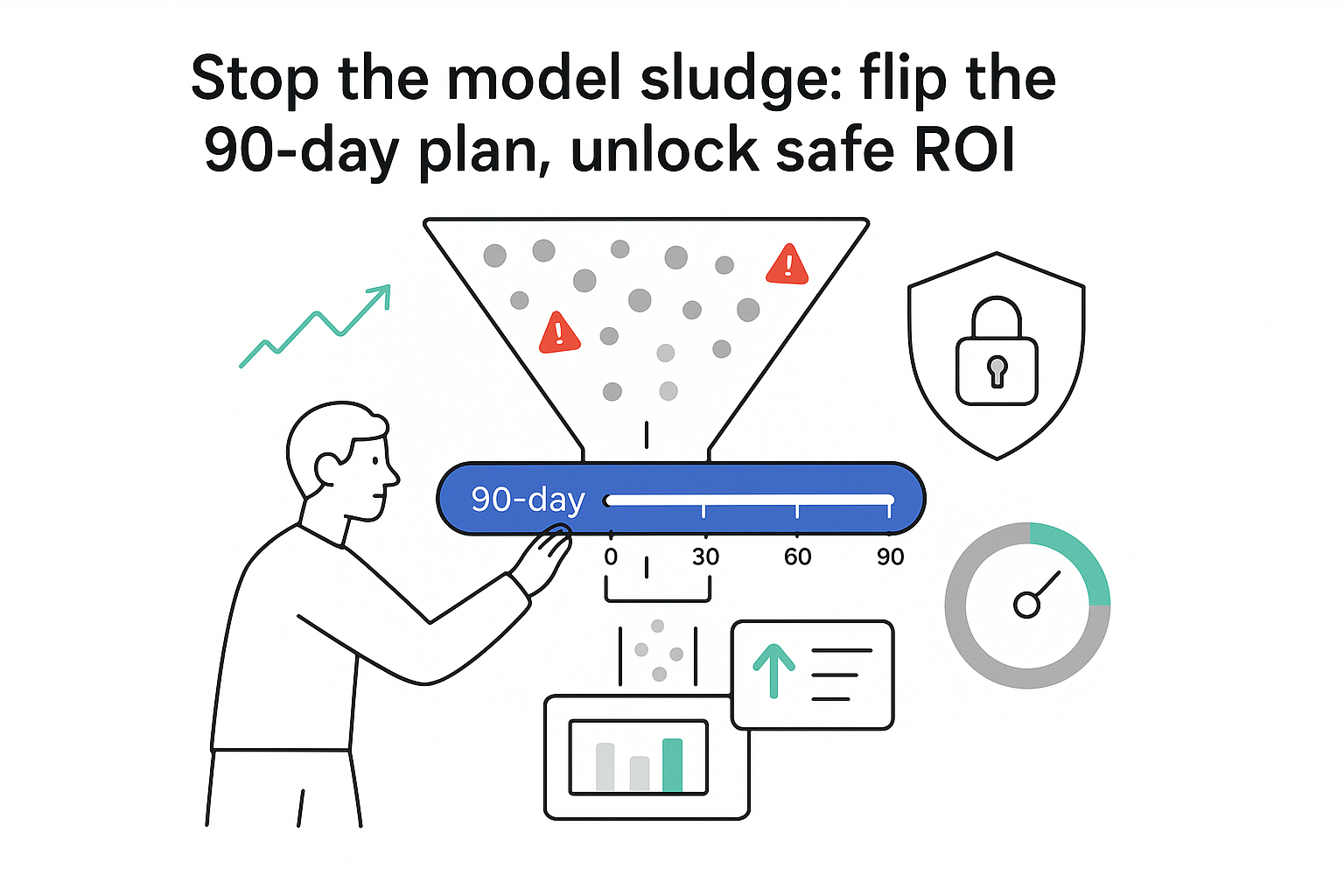I want SEO that moves the needle, not a science project. If you run a B2B service company and you’re weighing search against paid, you’re probably asking two things: how soon do I see real pipeline, and who is accountable? The short answer: with the right plan, I ship bottom-of-funnel pages in week one, aim for first organic SQLs within 60-90 days (assuming a crawlable site and reasonable domain baseline), and build compounding growth without micromanagement. Here’s how I structure that plan, what to prioritize, and how I judge whether I’m picking the right partner.
How I evaluate an SEO partner for B2B services
I look for ownership of pipeline, speed to value, and reporting I can defend in a board meeting. A concise scorecard helps me separate signal from noise:
- B2B specialization: Evidence of wins in services with long cycles, multiple stakeholders, and ACVs similar to mine.
- Ownership of outcomes: SQLs, pipeline, and revenue as headline metrics (not just traffic).
- Speed to value: Bottom-of-funnel pages and conversion fixes shipped in the first 30 days.
- Trustworthy attribution: A joined-up view across analytics, search performance data, and CRM that sales accepts.
- Relevant case studies: Same motion, similar sales cycle, clear numbers, believable timelines.
- Technical competence: Core Web Vitals, schema, crawling/indexation, and CMS quirks handled without drama.
- Content with authority: Real subject-matter expertise and visible E-E-A-T signals.
- RevOps alignment: Shared definitions for MQL/SQL and clear next steps after a handoff.
Signals I like to see in their materials: client logos grouped by vertical, a short quote tied to business outcomes (pipeline/CAC), and simple KPI cards showing SQLs and pipeline from organic. No magic - just a repeatable operating model tied to sales math.
High-impact SEO moves that pay back fast
I prioritize initiatives that clarify intent, reduce friction, and get sales-ready traffic:
- Bottom-of-funnel intent pages: Solutions, industry variants, pricing explainers, competitor comparisons, and integration pages. Outcome: Faster SQL volume, clearer intent, higher win rates.
- Case study SEO: Scalable templates, structured data, and targeting “service + industry + outcome” terms. Outcome: Credibility and higher close rates once traffic lands.
- Thought leadership that earns links: Opinionated takes backed by data and practical how-tos that attract coverage. Outcome: Domain strength and referral lift.
- Review aggregation pages: Consolidate trusted third-party ratings and address common objections. Outcome: Trust and lower friction late in the journey.
- Partner co-content: Co-authored guides, aligned landing pages, cross-linking. Outcome: New audiences and quality link equity.
- Programmatic SERP coverage: Templated pages for service lines, industries, and regions - only where content quality and intent fit are strong. Outcome: Wide reach across high-intent long-tail terms.
Effort vs. impact, simplified:
- Quick, high impact: Bottom-of-funnel pages; CRO on demo/contact pages.
- Mid effort, high impact: Case study SEO; programmatic pages; internal linking hubs.
- Mid effort, mid impact: Review aggregation; expert bylines; well-formed schema.
- Higher effort, compounding impact: Thought leadership plus digital PR and partner content.
From plan to execution: the first 90 days
I organize the work into focused streams with measurable outcomes.
-
Technical foundation
- Scope: Crawl, indexation, page speed, Core Web Vitals, schema for services/reviews, duplicate content, and rendering issues.
- KPIs: Index coverage, LCP/INP/TTFB improvements, crawl errors resolved, render efficiency.
-
Intent mapping and keyword strategy
- Scope: Map queries to funnel stages, match pages to intents, and brief content for bottom/mid/top-of-funnel with sales input.
- KPIs: Share of voice on priority terms; rank gains for target pages; organic SQL rate by page type.
-
Content hubs and clusters
- Scope: Build service hubs with industry pages, FAQs, competitor comparisons, and integration content. Use SME interviews for accuracy and nuance.
- KPIs: Hub-level rankings and traffic; assisted conversions; engagement depth.
-
Authority and E-E-A-T
- Scope: Publish data-led stories, secure relevant mentions, and use named experts with bios, credentials, and governance.
- KPIs: Referring domains (quality over quantity); relevance of mentions; improvements in targeted cluster visibility.
-
CRO for demo/contact
- Scope: Tighten copy, add proof near forms, reduce fields, set response expectations, test risk reducers (e.g., SLAs or sample deliverables).
- KPIs: Conversion lift; form completion time; SQL rate per landing page.
-
RevOps alignment and attribution
- Scope: Connect analytics and search data to CRM; standardize lifecycle stages and UTM hygiene; adopt a multi-touch model validated by sales.
- KPIs: Organic-sourced SQLs and pipeline; close rate by page source; payback time.
I run this in 90-day sprints:
- Sprint 1 (days 0-30): Ship bottom-of-funnel pages, fix critical tech, enable attribution, and implement CRO on key forms.
- Sprint 2 (days 31-60): Launch hubs, expand internal links, secure first mentions, and close competitor gaps.
- Sprint 3 (days 61-90): Scale programmatic coverage where intent fits, double down on what’s working, and refine OKRs and attribution.
What actually moves rankings in B2B
Rankings respond when structure, signals, and speed align.
- Internal linking architecture: Clear hubs for each service/industry. Use descriptive anchors, prioritize crawl paths from the homepage, and elevate money pages in nav where appropriate.
- Schema for services and reviews: Service, Organization, and Review schema to clarify to crawlers and qualify for rich results.
- Expert bylines and governance: Named experts with credentials and a review cadence. Accuracy beats volume.
- Speed and Core Web Vitals: Image compression, lazy loading, preconnects, and lean script execution. Maintain a standing performance backlog.
- Topical authority clusters: Cover the full topic - obstacles, pricing factors, comparisons, integrations, and gotchas.
- Competitor gap fills: Identify terms competitors rank for that map to buyer intent and prioritize those holes.
Mini-map (page type → focus → KPI):
- Service page → intent fit, internal links, schema, speed → service term rankings; demo conversion rate.
- Industry page → relevance, case study links, partner mentions → industry keyword rankings; SQLs by industry.
- Comparison page → honest pros/cons, structured headings, FAQs → time on page; assisted conversions.
- Case study → structured template, results, client quotes → organic entrances; win rate on touched deals.
- Resource hub → comprehensive coverage, clear nav, updates → cluster visibility; links earned.
Directionally, I often see mid-difficulty terms move from page 2 to page 1 in 6-8 weeks once foundations, links, and engagement improve - but domain strength and content depth heavily influence the curve.
When to expect results (a practical timeline)
SEO takes time, yet quick wins are real. A realistic cadence looks like this:
- Days 0-30: Launch bottom-of-funnel pages; fix blockers; connect analytics/search/CRM; start CRO on key forms. Dependencies: dev bandwidth and SME review time.
- Days 31-60: Publish first hubs; roll out internal links; begin digital PR/mentions; push review aggregation. Dependencies: content velocity and approvals.
- Days 61-90: Expand programmatic coverage; tighten performance; tune lead capture. First organic SQLs commonly appear in this window if the baseline is sound.
- Days 90-180: Compounding effects show - authority builds, rankings stabilize, and pipeline grows month over month.
ROI math you can defend
Keep the math simple and traceable.
- Gross profit from SEO = (organic SQLs/month) × (close rate) × (LTV) × (gross margin).
- Net ROI = (gross profit − SEO spend) ÷ SEO spend.
Inputs to gather from your systems:
- LTV and gross margin
- Organic SQL rate by page type
- Close rate from organic
- Average time to close
- Monthly SEO investment
Worked example (illustrative):
- 40 organic SQLs/month after month six
- 25% close rate from organic
- LTV of 40,000 with a 65% gross margin
- Monthly SEO cost of 18,000
Gross profit/month = 40 × 0.25 × 40,000 × 0.65 = 260,000. Net ROI = (260,000 − 18,000) ÷ 18,000 ≈ 13.4. Break-even commonly lands around months 4-7 for service firms, depending on ACV and cycle length. Paid CAC can hit fast early; organic tends to lower blended CAC over time while keeping volume durable.
Attribution notes I rely on:
- Keep a multi-touch model in your analytics platform with CRM validation; sanity-check against last-click and a position-based view.
- Tag content-sourced deals in CRM (campaign source and content touched).
- Set OKRs that roll up to revenue (e.g., publish X bottom-of-funnel pages, reach top 5 for Y priority queries, and hit Z organic SQLs/month) and map each to projected pipeline.
Lean budgets, real impact
On small budgets, I focus on highest-leverage assets:
- Ship 3-5 bottom-of-funnel pages for the highest-margin services and common industries.
- Build one industry hub with related FAQs and one strong case study.
- Do a tight technical cleanup across the top ~10 pages: indexing, titles/metadata, and key internal links.
- Create one link-worthy asset grounded in original insights or benchmarks your sales team actually uses.
- Improve the demo/contact page: concise copy, proof near the form, shorter fields, and explicit response times.
In-house vs. partner trade-offs:
- In-house accelerates context and day-to-day control but may lack deep technical/PR skills; speed can suffer.
- A partner brings pattern recognition and execution capacity at the cost of onboarding time and fixed scope. Either way, insist on accountability to SQLs and pipeline.
Budget allocation idea for small teams:
- ~35% content and SME time
- ~25% technical and performance fixes
- ~20% CRO and analytics
- ~20% digital PR and partnerships
Proof that resonates with executives
Social proof matters more when buyers face risk and long cycles. I favor proof that speaks the language of CEOs.
Simple case story structure:
- Problem: Missed targets, high paid CAC, weak organic pipeline.
- Approach: Bottom-of-funnel pages, technical fixes, hubs, and targeted PR/mentions.
- KPIs: Rankings for service + industry terms, SQL volume, pipeline, and time to close.
- Revenue impact: CAC down, pipeline up, deal size up where case studies were viewed.
Add layers of credibility:
- Short video testimonials with specific numbers and plain language.
- Third-party ratings or analyst notes relevant to your category.
- Before/after graphs of rankings, organic SQLs, and pipeline pulled from analytics and CRM.
Map outcomes to leadership priorities:
- Pipeline that shows up in the board deck.
- Reduced blended CAC across quarters.
- Larger deal sizes tied to credible content and case studies.
- Less reliance on paid when budgets tighten.
Final note
SEO is not a gamble when it runs like an operating system. I ship bottom-of-funnel early, fix what slows you down, build authority with real expertise, and connect everything to revenue. Trends will shift - from AI summaries to privacy changes - yet the companies that keep SEO tied to sales math keep winning, quarter after quarter.







.svg)